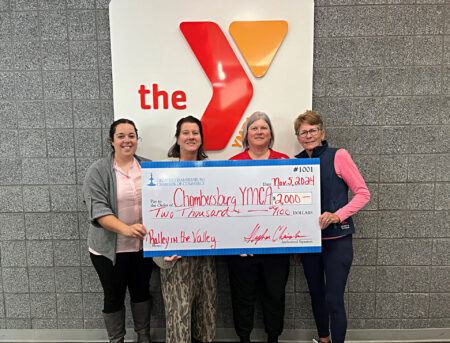As another national birthday is celebrated, Cumberland Valley residents have much to commemorate, with an impressive array of local people, places, and past events that helped define our country’s 247-year legacy.
Sparked by that patriotic thought, what follows is an unofficial ranking of the best of local history: created as an alphabetical listing with entries that come to mind as those 26 letters are counted down. This grouping isn’t the definitive list of every historic treasure in the tri-state region. But this A to Z list recalls many legendary components that enriched the area in past years, along with many attractions and sites that can still be enjoyed today.
A is for Antietam Creek. This famous local stream originates in Franklin County’s high country, then meanders south into Washington County where an epic Civil War battle once took place along its banks. The name Antietam evokes national historic significance. A is also for the Appalachians, a storied mountain chain that decorates the local landscape, which includes the world-renowned Appalachian Trail. This challenging 2200-mile footpath reaches its halfway point in the area.
B signifies James Buchanan, 16th American President, born in a Franklin County log cabin in 1791. Other prominent B’s are John Bell, the celebrated potter, the town of Boonsboro with its charming historic district, and the wealth of stone Bridges that span local creeks and streams. Burnside Bridge is the most famous- an enduring landmark at Antietam Battlefield.
C commemorates the C&O Canal, the 184-mile transportation marvel that became obsolete before it was completed, and for Camp David, the rustic presidential retreat hidden in the Catoctin Mountains. C also recalls Benjamin Chambers, a Scots-Irish immigrant and founder of Chambersburg.
The letter D denotes the Dunker Church, a historic house of worship on Antietam’s battlefield, still standing today after that brutal 1862 fight. Doub’s Farm, and Doub’s Mill Historic District are also remembered in Maryland’s Washington County.
Ebbert Spring is not only a lasting natural landmark in PA’s Antrim Township, but now serves as an Archeological Park where past civilization’s artifacts are discovered and analyzed. E also evokes the architecture of Elmwood, a 19th-century Greek Revival estate home located near Williamsport MD, recognized as a National Register of Historic Places (NRHP) site.
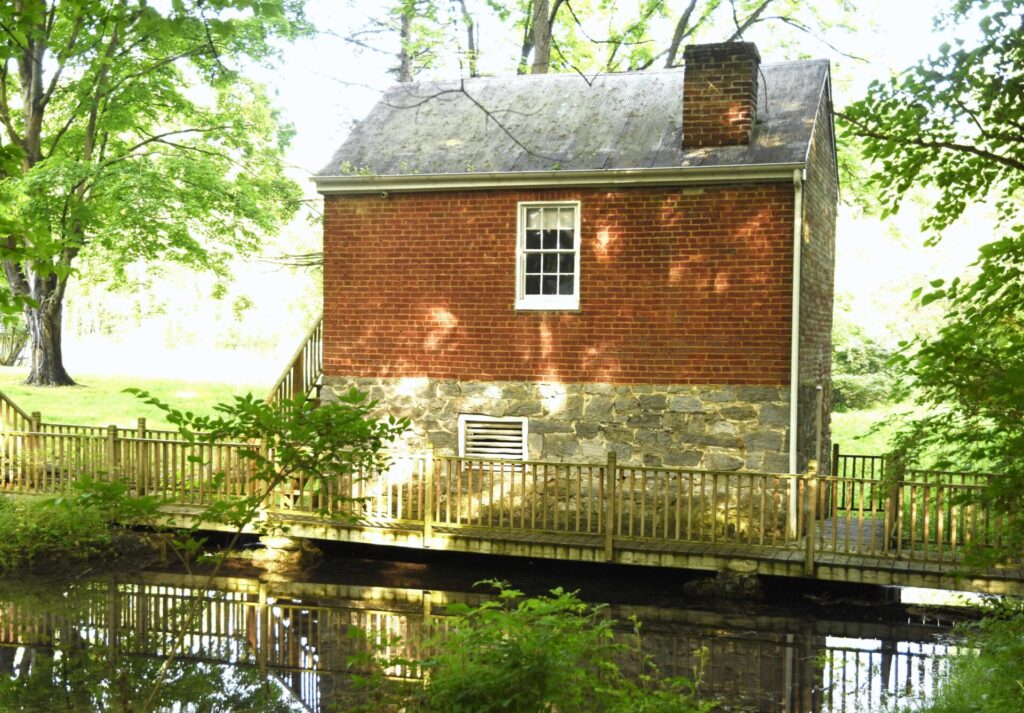
F brings to mind the many Forts in the region, which include Fort Frederick, built during the French and Indian War, and Fort Ritchie- a former training ground for the Ritchie Boys and now undergoing a civilian revival after the military decommissioned the base. Frank Feather was a colorful traveling artist who carved intricate canes and other wood sculptures during his area ramblings in the early 1900s.
Gettysburg is an instant choice for letter G, likely the most famous small town in America. This week, the community will commemorate the 161st anniversary of the 1863 Civil War battle, with the newly reopened Little Round Top lookout again serving as a prominent vista. The General Warren statue commands this rocky high ground. In Waynesboro, Green Hill Cemetery is the area’s most picturesque and historic resting place.
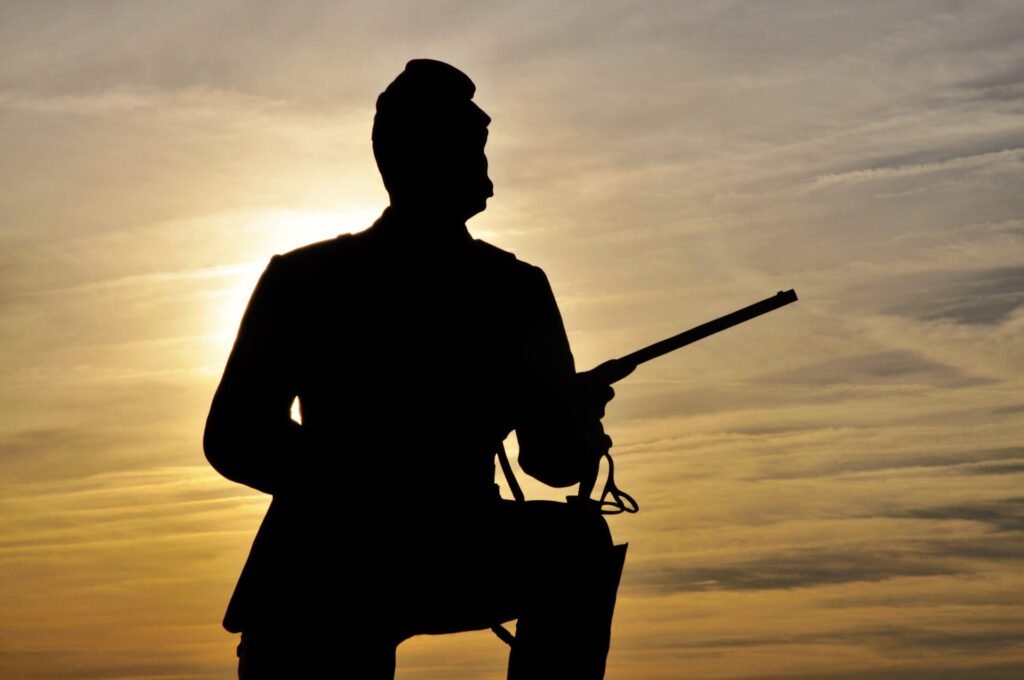
Jonathan Hager founded Hagerstown, later known as the ‘Hub City’ for its prominent railroad location. The community was later designated as Washington County’s governmental seat, the first county in America named for founding father George Washington. H also honors Harpers Ferry, the scenic West Virginia river-town and site of John Brown’s infamous 1859 raid, which kickstarted the Civil War.
I inspires remembrance and appreciation for the area’s many Industries, which catapulted towns like Waynesboro and Hagerstown onto the world stage. These included manufacturing and engineering firms, railroads, and also farmers tilling the valley’s fertile landscape, still home to a thriving agricultural empire.
Jonathan Street is a historic African-American neighborhood in Hagerstown. This street was home to many significant businesses and homes after the Civil War, including the residence of Jacob Wheaton, the first Black man able to vote in Maryland.
K conjures the image of Washington County’s Kennedy Farm, a property John Brown used as a staging ground for his infamous Harpers Ferry raid. Brown was hanged after his planned slave insurrection failed. In Hagerstown, Krumpe’s Do-Nuts have sold their baked treats for 88 years, now served by a third generation of the Krumpe family.
In Mercersburg, the Lane House is a newly restored inn, once home to Harriet Lane, President Buchanan’s niece. This 16th Chief Executive was the only bachelor president, and Lane served as his official White House hostess, inspiring the honorary term of First Lady. Also in Franklin County, the Landis Brothers (Frank and Abe) were two industry titans who created Landis Machine Company and Landis Tool Company. These successful companies helped Waynesboro industry excel for many decades.

M maintains quality namesakes, including the defining boundary between PA and MD- the Mason-Dixon Line. Charles Mason and Jerimiah Dixon surveyed this legendary demarcation from 1763 to 1767, and stone markers they placed are still visible today. Only a mile north, Monterey Pass is the scene of a dramatic late-night Civil War battle, fought in a thunderstorm during the Confederate retreat from Gettysburg. This historic site will reenact a portion of that ancient wagon-train retreat this weekend. In Emmitsburg, Mother Seton was the first American Saint canonized by the Catholic Church.
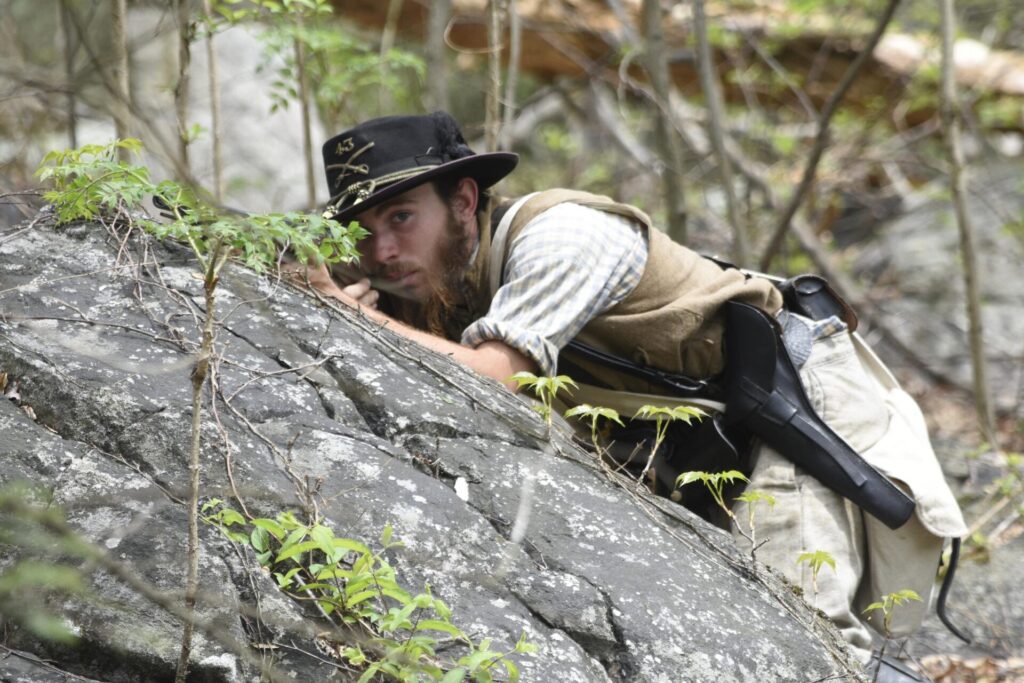
Nellie Fox was born in St. Thomas, PA in 1927. This star athlete became one of the greatest second basemen in Major League Baseball history and was later elected to the Hall of Fame. N also recalls the National Road, the nation’s first improved highway. It ran a scenic course through frontier Maryland, connecting the Potomac and Ohio Rivers.
O is for Old Forge, where a Quincy Township iron furnace, sawmill, and related waterworks were created in 1811. Later, this forested area astride the Appalachian Trail became a beloved picnic area. Oller House in Waynesboro, a Victorian-era architectural beauty, was donated by Rello Oller to serve as the town’s Historical Society headquarters. Orrstown is a PA village of 214 citizens so carefree that the town doesn’t currently have a Mayor in office.

The Potomac River is a major waterway with multiple ties to Maryland’s history. It defines the state’s serpentine boundary with Virginia and West Virginia, and also served as the water source for the C&O Canal and strategic location for Fort Frederick. Today it is cherished recreational resource. P also promotes Pen-Mar Park, the bygone mountain attraction that once drew thousands by trolley and train into the Appalachians. The park is perched on the PA/MD border and its combined name represents a friendly kinship between the two neighboring states.
Q is for Quincy, a small hamlet and its surrounding township in Southern Pennsylvania. The town was founded by German immigrants, and a post office has been in continuous operation there since 1830.
Raven Rock was an alternate name for Site R, a massive underground bunker and military complex tunneled into the Appalachians during the 1950s. Today, the facility remains vital to national security. R also sparks reminisces about roses- for the three Rose Rent churches in Chambersburg that pay the sum of a single rose as their yearly rent to Benjamin Chamber’s descendants.
South Mountain is the mountain ridge stretching north from Maryland into Pennsylvania. Many historical events happened on this high ground, including Civil War battles. S is also the first letter of two historic communities sitting on opposite banks of the Potomac. Sharpsburg hosted the battle of Antietam, but this lovely town has remained peaceful since. Shepherdstown is one of West Virginia’s earliest incorporated towns, with a downtown featuring memorable architecture and a thriving college culture.
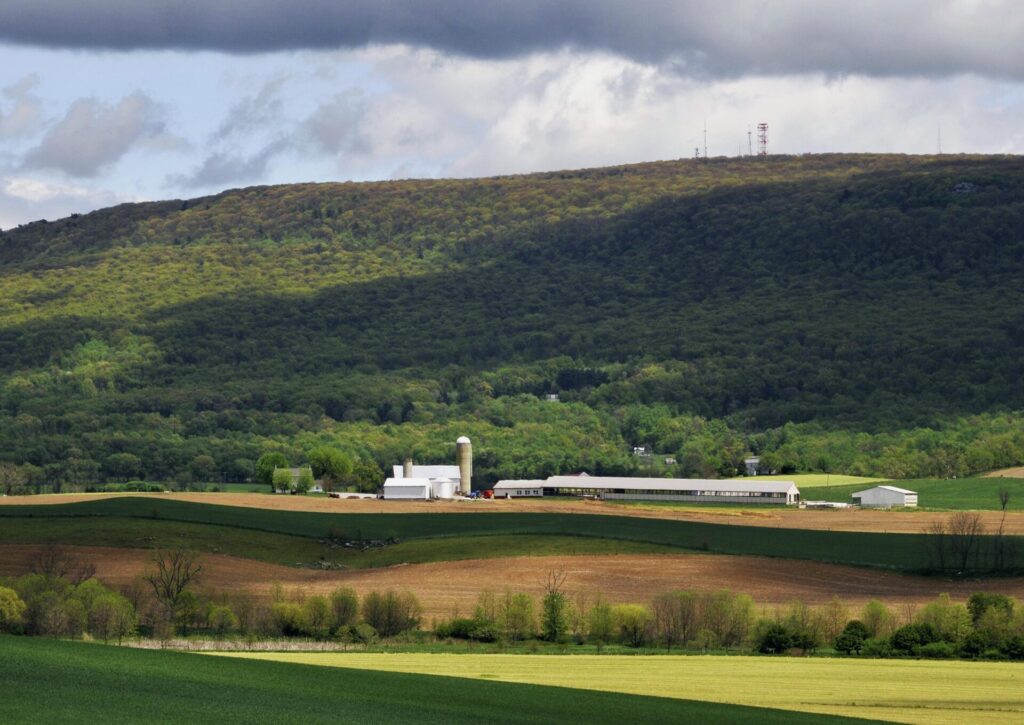
In the shadow of Maryland’s Catoctin Mountains, Thurmont is a gateway community that welcomes travelers to explore blue ridge outdoor recreation. Across the border, T is for Tomstown, a rural farming community with a well-known town pump that constantly gushes a fresh water supply. In Waynesboro, the athletic legacy of the Tigers semi-pro football team is still celebrated, remembering their gridiron dominance in the 1940s and 50s.
The history of the Underground Railroad is interpreted on both sides of the Mason-Dixon Line. Many brave men and women are remembered who successfully escaped slavery, assisted by kind strangers during a dangerous quest for freedom. Upton is a quiet community situated between Greencastle and Mercersburg, known for its Irwinton Historic District.
V is remembered at Valentia, a NRHP stone farmhouse near Hagerstown. This historic property faces south toward Antietam Creek. In Franklin County, a small crossroad community called Vanilla had its apparent heyday from 1902 to 1905, when a post office operated there for three short years.
In Washington County, America’s first Washington Monument was constructed in 1827. This rustic 40-foot-tall stone structure is experienced today inside a Maryland State Park. In Waynesboro, the Wayne Band is celebrating its 125th year in 2024 with free public concerts. Also in this friendly borough, Welty’s Bridge is a fine example of the area’s arched stone bridges.
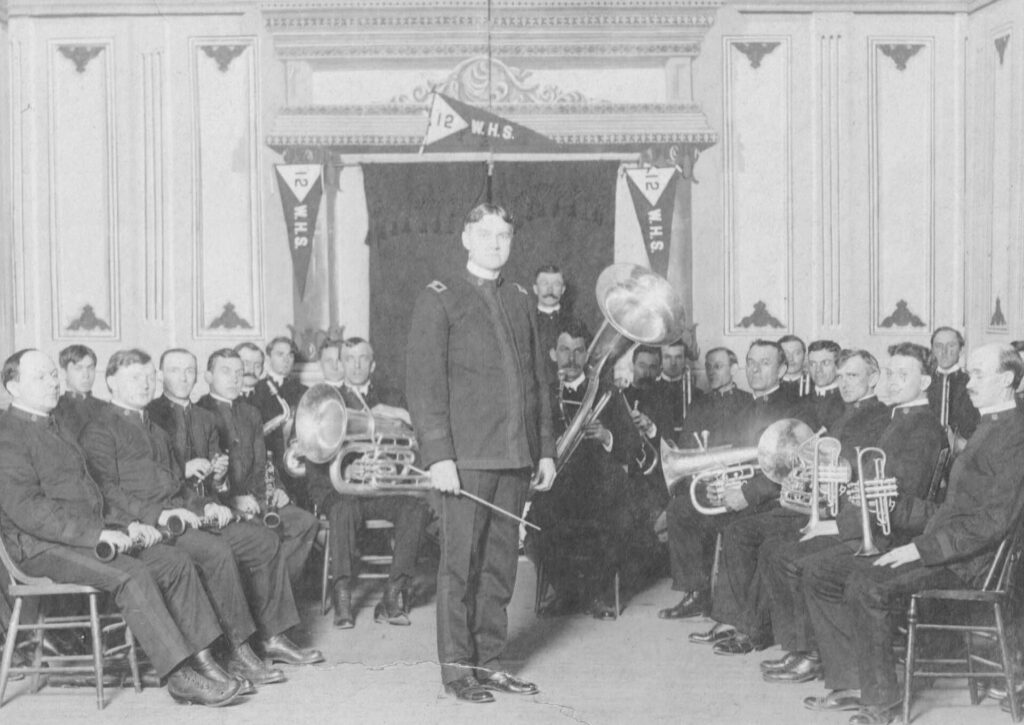
A historic X-ray of the local area revealed that X doesn’t mark the spot for any site, town, or person of interest.
At the foot of Elk Ridge mountain in Washington County, Yarrowsburg was named for Aquila and Polly Yarrow, free African-Americans who in 1825 bought a log home situated on an acre here. Today, 112 people reside in this rural village.
To finish off the alphabet, Z is represented by the Zion Reformed Church in Chambersburg, a historic house of worship known as one of three Rose Rent churches. Zullinger falls at the alphabetical end on a list of local communities. Born and raised in Franklin County, Zelda Wynn Valdes (1901-2001) closes out the list with flair. Zelda was a famous clothing designer who created the original Playboy Bunny waitress costumes that debuted in 1960.






